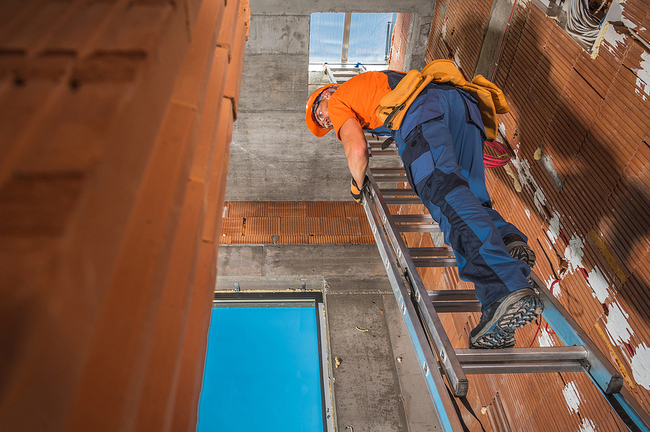Construction Safety: Fall Prevention Best Practices

Falls are the number one cause of death in the construction industry and account for one-third of all fatalities. As a major source of worker-related accidents, fall prevention is a strong focus for both contractors and industry leaders. However, falls continue to be a pertinent issue for the industry and the main focus of construction safety campaigns across the country. In this article, learn some interesting cases involving construction falls and some best practices to implement in your business.
Relevant Statistics
As mentioned before, falls are most frequent in the construction industry. In fact, according to the National Institute of Occupational Safety and Health (NIOSH) they represent over 51% of all falls nationally.
However, an interesting point to note is the types of non-fatal falls that hurt the industry. According to 2019 data from the U.S. Bureau of Labor Statistics, falls from the following exposures contributed to the highest number of days away from work:
Falls to Lower Level: 13,770
Falls on Same Level: 7,400
Slips, Trips Without a Fall: 3,620
Total Falls: 24,790
This distinction, which has increased steadily since 2015, is an important one to note. Not only does the non-fatal fall data identify non-fatal exposures to improve upon, but exposures that could more likely lead to unfortunate fall fatalities.
Notable Cases
As one of the most litigated industries in the United States, construction has experienced some notable fall prevention cases. The use of heavy machinery plus multi-level work sets a high exposure threshold for construction workers.
In one high-profile case, a demolition worker fell four stories while operating a front-end loader during a stadium project. Due to financial penalties on the project, the general contractor used subcontractors to demolish the pillars in the stadium. A review found that while the loader was able to sustain 2,700 pounds of force, the pillars being cut weighed 15,000 pounds. As a result, OSHA cited the sub-contractors at fault for violating safety regulations. A nearly 56 million settlement was reached.
In another case from 2018, a construction firm was ordered to pay a 100k civil penalty as well as a 150k criminal fine as a part of a fall prevention case. In 2015, a construction worker fell 3 stories while completing stucco work. The fall caused the worker to suffer a fractured skull and a laceration in his frontal lobe. The case concluded that the construction company committed 8 OSHA safety violations in addition to four serious citations. As a result, the company is submitted to OSHA monitoring for 4 years.
A recent lawsuit filed with Romanucci & Blandin, LLC cited multiple violations to the fatality of a construction worker from a fall in late 2019. The victim, who fell 2 stories while building a church, passed away after being in intensive care for over 2 weeks. In the lawsuit, the plaintiff cited that the builder did not have a proper building permit and did not have necessary fall protection in place. Wrongful negligence is cited as the primary cause of the accident and is still being settled as of 2020.
Fall Prevention Best Practices
To mitigate falls in construction, the National Occupational Safety and Health Administration (OSHA) has partnered with NIOSH and the National Occupational Research Agenda (NORA). The campaign, in force since 2012, aims to raise awareness among workers and industry leaders on common fall hazards and controls to implement.
Before starting work on a project, make sure to plan ahead. When estimating job cost, project leaders should factor in cost of safety equipment and the proper tools and materials needed for that particular job. For example, the use of personal fall arrest systems (PFAs) are common for most roofing and exterior painting projects.
Providing the right equipment for the job is another important step toward fall prevention. Using the right kind of ladders, scaffolding and safety gear can protect employees working from as low as 6 feet above the ground. Make sure to regularly inspect fall protection equipment so it is ready for safe use.
Lasty, proper training on the use of equipment is crucial for keeping all workers safe. Ensuring everyone knows proper set up and use of fall prevention equipment can keep everyone accountable and safe. Make sure employees are aware of common hazards and controls present for the specific job you carry out.
For more information on fall prevention best practices and how to properly protect your construction workers, visit BNC insurance to speak with an advisor today.



